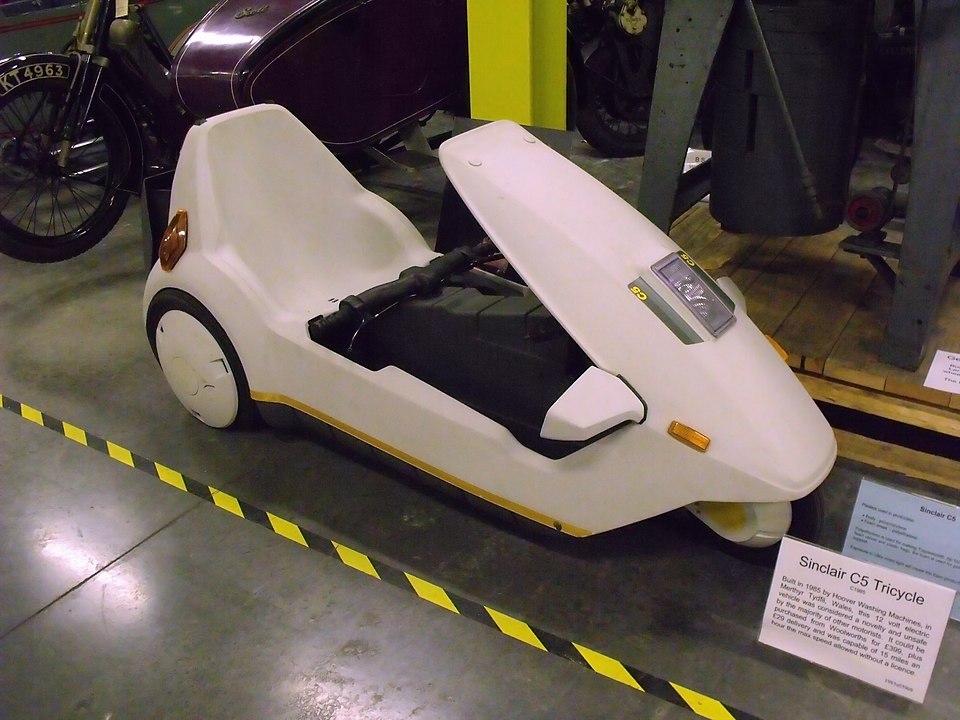40 Years of the Sinclair C5: Nostalgia and Renewed Interest in Electric Tricycles

On January 10, 1985, Sir Clive Sinclair introduced the Sinclair C5, an innovative electric tricycle aimed at revolutionizing personal transportation. Despite its initial struggles, including limited sales and functionality, the vehicle has gained renewed interest 40 years later, as evidenced by a recent rally of enthusiasts in Cambridge, England.
During this gathering, attendees celebrated the enduring appeal of the C5, which features a pedal-assisted electric motor, offering a top speed of approximately 15 mph and a range of 18.7 miles on a single charge. According to Bryan Griffin, a rally organizer and C5 owner, the vehicle's quirky design continues to captivate both older fans and a younger generation unfamiliar with its vintage origins. "People love them, and the younger generation asks if they can hire them—they don’t realize they’re 40 years old," Griffin stated.
The rally, which attracted participants from various regions including Hertfordshire and Lincolnshire, concluded at the Sinclair Building on Willis Road, the former headquarters of Sinclair Vehicle Ltd. Participants expressed a strong sense of community driven by their mutual admiration for the C5. Griffin emphasized the vehicle's practicality, noting how its compact size makes it easy to transport and park.
Crispin Sinclair, Sir Clive's son, reflected on the legacy of the C5. He remarked, "It was probably a bit early for its time, but a beautiful design. When you look at them, they haven’t dated." This sentiment resonates with many enthusiasts who view the C5 as a precursor to the current electric vehicle trend.
Historically, the C5 was manufactured in Merthyr Tydfil, Wales, with a total production of 14,000 units; however, only 5,000 were sold before production ceased due to disappointing sales figures. Critics at the time cited the vehicle’s limited speed and range as significant drawbacks. Research conducted by the University of Cambridge in 1985 indicated that consumer dissatisfaction stemmed from its inability to navigate steep inclines effectively, limiting its appeal in a varied terrain.
However, the surge in electric vehicle popularity has reignited interest in the C5. Enthusiasts like Neil Cubitt, who has restored over 100 C5s since acquiring his first in 2009, believe that the vehicle represents Clive Sinclair’s visionary spirit. "I think Clive Sinclair— in his day—was a very great entrepreneur, way ahead of his time. He was more ahead than the technology," Cubitt stated.
The C5’s design has become a nostalgic symbol of the early days of personal electric transport, prompting discussions about its potential as an urban mobility solution. As cities continue to grapple with congestion and pollution, electric tricycles like the C5 offer an alternative for short-distance travel, aligning with modern sustainability goals.
The implications of this renewed interest extend beyond nostalgia; it may indicate a shift in consumer attitudes towards alternative modes of transport as the world increasingly focuses on climate change and environmental sustainability. As Crispin Sinclair pointed out, his father was continuously innovating, even working on electric bicycles at the time of his passing. This legacy of innovation may inspire future adaptations of the C5 concept, potentially leading to a new wave of practical, eco-friendly transportation options.
In conclusion, the Sinclair C5, while initially deemed a commercial failure, remains a beloved relic of British design and innovation. Its resurgence in popularity highlights a growing appreciation for sustainable transportation solutions and serves as a reminder of the lasting impact of visionary entrepreneurs like Sir Clive Sinclair. As the world moves towards greener alternatives, the C5 could find its place in the modern landscape of personal transport, bridging the gap between past and future.
Advertisement
Tags
Advertisement





